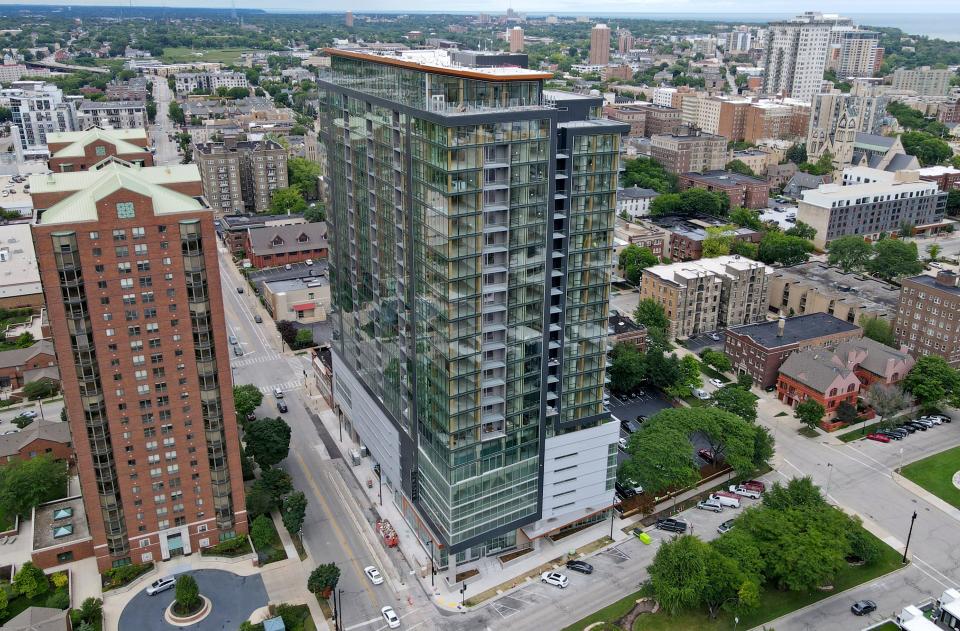Milwaukee hasn't been able to stem its population decline, much less grow. Here are four takeaways.
Throughout his campaign, and since he's taken office, Mayor Cavalier Johnson has touted an audacious idea: He wants to grow the city's population to a million.
Milwaukee's population has been falling for more than half a century. In 2020, the Census counted about 577,000 people living in the city.
That's way down from the city's peak, in 1960, of about 741,000 residents.
What would it take to reverse Milwaukee's decades-long decline?
Here are four takeaways:
Almost all of Milwaukee's population losses are on the north side
In the last three or four decades, the north side has experienced a severe population loss, according to a new report by the Lubar Center for Public Policy Research and Civic Education at Marquette University Law School.
The north side is home to many Black Milwaukeeans, who report more negative experiences of the city than their white and Hispanic peers. The north-side exodus shows the consequences of Milwaukee's racial disparities, the Lubar Center report said.
As more people leave, more homes are left vacant. In many north-side neighborhoods, empty lots dot the landscape.

Meanwhile, the population is growing on Milwaukee's east side and downtown. New housing, new entertainment venues and new jobs have drawn people in. Apartments are rising up to meet demand.
This growth didn't happen by accident, said Rocky Marcoux, former commissioner of the Department of City development. The city made strategic investments, most notably in the Milwaukee Riverwalk and the Third Ward.
Would it be possible to replicate downtown's success on the north side? The city would need to follow a similar playbook, Marcoux said: "Go either where the private sector can’t go, or won’t go."
Development is not happening where kids are growing up
Milwaukee has always been home to a lot of kids. The city's birth rate is higher than the surrounding suburbs, or the country as a whole.
But in the past few decades, the birth rate has been falling. As the number of kids born in Milwaukee falls, so too does the city's population.
Between 2010 and 2020, the city's under-18 population fell by nearly 16,900, according to an analysis by John Johnson, research fellow with the Lubar Center.
Is Milwaukee doing enough to accommodate families?

Almost all the new development downtown caters to singles and couples. The apartments are generally too expensive and too small for growing families; the bars, restaurants and retail locations largely cater to an adult crowd.
On the south side, which is now home to the most kids, hardly any new housing has been built in decades.
Highways drove people out of Milwaukee. City leaders want to change that.
Beginning in the 1960s, the construction of highways sent many Milwaukeeans packing for the suburbs. Many neighborhoods — disproportionately Black neighborhoods — were destroyed in the process.
Milwaukee leaders see the removal of the Park East Freeway two decades ago as an example of how removing highways can spur growth. Fiserv Forum and the Deer District have created a whole new community where that freeway stood.
Now, Johnson and other Milwaukee leaders are looking to "reimagine" the Stadium Freeway North. In May, these leaders announced a study that will explore ways to remove or retrofit the freeway.
Milwaukee loses people to warm-weather areas. Could climate change reverse that?
While Milwaukee and other Rustbelt cities decline, the Sunbelt booms.
But how long can that last? Extreme heat and winter storms are straining Texas's grid; drought is endangering the Colorado River water supply; hurricanes are battering the coasts.
"Folks will be looking for climate havens," Johnson said. "They'll be looking for places with access to abundant fresh water, and that's what we have in Milwaukee."
But to draw in new people, Milwaukee would need the kind of economic engine that's fueling the Sunbelt. Milwaukee needs more family-supporting jobs, said like the manufacturing jobs of years past, before the city's decline. That's a tall order.
This article originally appeared on Milwaukee Journal Sentinel: Can Milwaukee almost double its population? Here are four takeaways.

